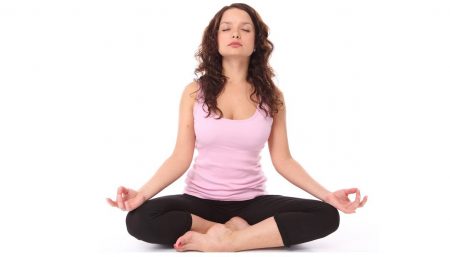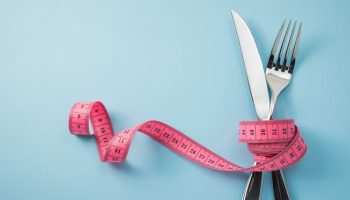Addiction can be of different forms: alcohol addiction, drug addiction, eating disorders, gambling addiction, sex addiction, smoking addiction, to mention a few. Besides, addiction is a symptom and can be treated. By uncovering the underlying causes and taking action, one can move from the darkness to light. Light back bends bring about an opening in the chest and solar plexus area, encouraging the elimination of stored hurts (both real and perceived).
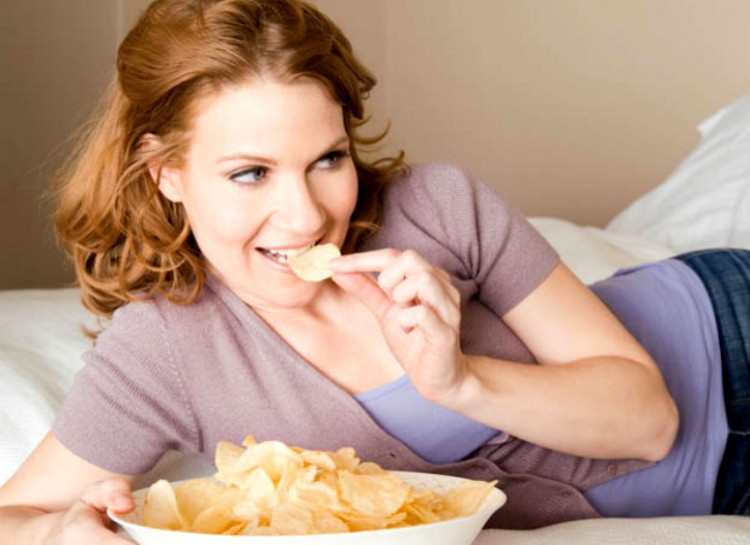
Poses like the Downward Facing Dog (Adho Mukha Svasana) bring about a new perspective, looking at the world from a different angle.
The study, published online in the Early Edition of the Proceedings of the National Academy of Sciences, found that smokers trained with a form of mindfulness meditation known as Integrative Body-Mind Training (IBMT) curtailed their smoking by 60 percent. |
Here are some poses (asana) that are useful in addiction recovery:
- Paschimottanasana (seated forward bend): Lie on your back, legs straight, arms overhead, hands together, palms facing up. Sit up, take hands overhead, back straight, then bend forward to hold the big toes, head between arms and touching the knees. This asana reduces abdominal fat. Removes wind from the intestines and increases appetite.
- Balasana (child’s pose): Kneel on the floor, and then sit directly onto your heels. Shift your knees until they are a little more than hip-width apart. Bend forward at the hip; bring your chest to rest between your thighs. Keep your buttocks in contact with your heels and rest your forehead on the floor. If this is uncomfortable, rest your forehead on a cushion or folded blanket-make sure it is high enough for you to be comfortable. Stretch your arms out in front of you on either side of your head. Lengthen the muscles as far as you can, really give a good stretch! Then slide your arms back to your sides, palms up and relax. Remain in this pose for as long as possible. Breathe deeply and relax into the posture.
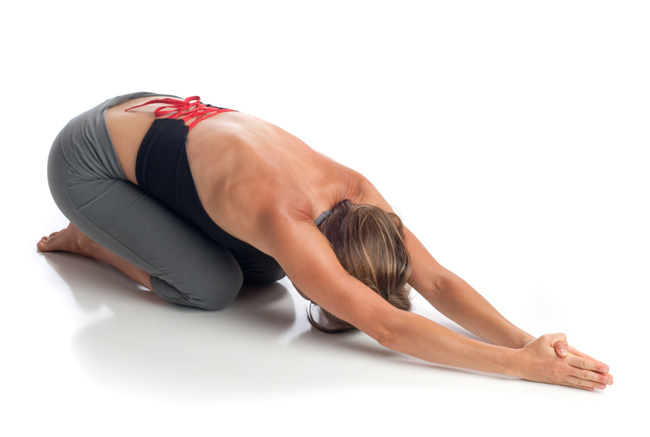
- Adho Mukha Svasana( Downward Facing dog): Stand in Tadasana facing a wall, about 1 m (3.5 ft) away from it. Place 2 of the blocks on their broad sides, shoulder-width apart, against the wall. Place the third block on its long side, 45cm (18in) away from the wall. Separate your feet to a distance of 45 cm (18 in). Kneel, and place your palms on the two blocks against the wall. Press your palms down on the blocks and walk your feet back, until they are 1.2 m(4ft) away from your hands. Make sure that your feet are inline with your hands and the same distance apart. Raise both heels. Stretch your legs, then lower your heels to the floor. Stretch your arms fully. Consciously stretch stretch each leg from heel to buttock, and from the front of the ankle to the top of the thigh. Raise your buttocks, stretch your chest, and push your sternum toward your hands. Exhale, then rest your head on the third block. Press your hands down on the blocks, extending your arms fully. Stretch your spine and expand your chest. Keep your throat soft and elongated. Relax your eyes and keep your brain passive.
- Ustrasana (Camel pose): Come up onto your knees. Take padding under your knees if they are sensitive. Draw your hands up the side of your body as you start to open your chest. Reach your hands back one at a time to grasp your heels. Bring your hips forward so that they are over your knees. Let your head come back, opening your throat.
- Apanasana (knees to chest or wind producing pose): Lie down on your back, drawing your knees towards your chest, and interlacing your hands above, or underneath, your knees. Soften the shoulders and allow the back of your body to relax and melt downwards. Enjoy the sensation of being held. Then cap your hands over your knees, fingers pointing towards feet, a little way down the shins. As you inhale, straighten the arms and bring your knees away from your head; as you exhale, soften the knees towards you. Continue moving gently with this pattern of breathing, aiming to tally breath and movement exactly. Keep your pelvis stable and your tailbone away from the crown of your head. Enjoy the gentle rhythm and back-soothing properties of Apanasa. Keep focusing on the interaction between breath and movement. After a minute or two, take your feet to the floor, arms out to the side, and fold your knees down to alternative sides, for a twist. Afterwards, lie in Savasana for a few minutes, absorbing how you feel.
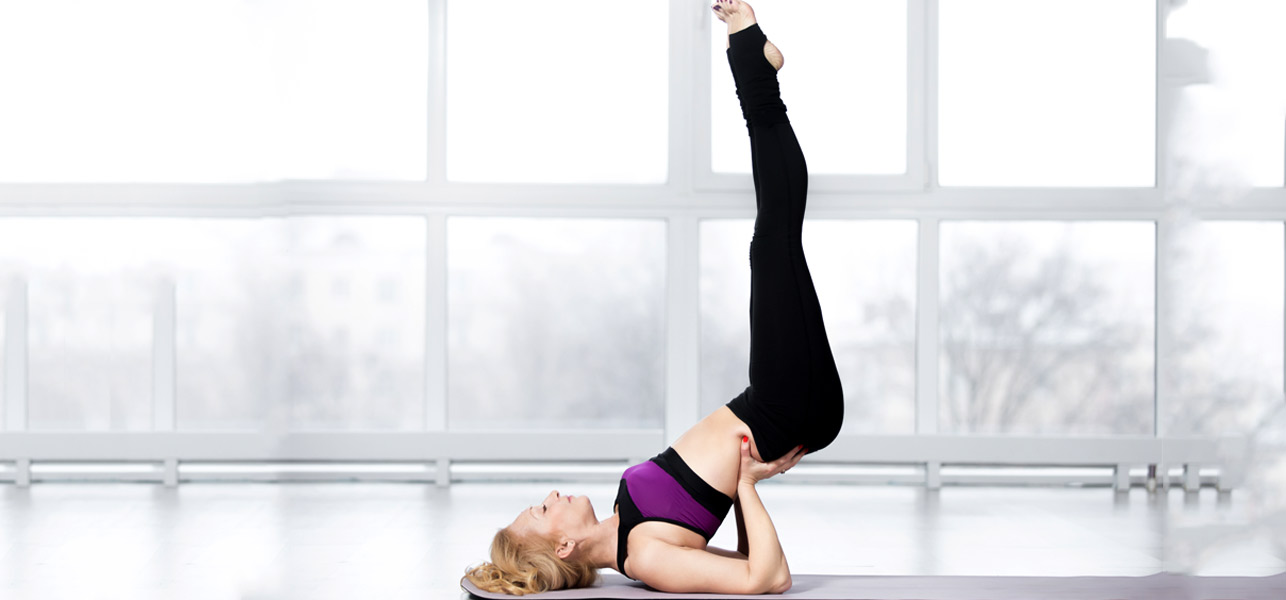
- Viparita karani (shoulder stand variation): Helps increase circulation and space in the pelvis. Lie on your side with your buttocks close to wall. Slowly inhale and exhale, then when you are exhaling turn your body and move your legs up to the wall at the same time so that you create a 90-degree angle at your pelvis between your legs and body. Stay in this pose for a few minutes inhaling and exhaling slowly.
- Savasana (corpse pose): Spread the mat on the floor. Place a bolster on the mat, with its long sides parallel to the long sides of the mat. Sit in Dandasana (Staff pose) with the short end of the bolster against your buttocks, and place the folded blanket on the far end. If you have osteoarthritis of the knees or if your legs are feeling tired, place a bolster under your knees. Wrap the bandage around your forehead, following the instructions for Ujjayi Pranayama. Now place your elbows and forearms on the mat. Lower your back, vertebra by vertebra, onto the bolster until your head rests comfortably on the folded blanket. Position your buttocks evenly on the centre of the mat. Spread out your arms to the sides, palms facing up, and rest them on the floor. Straighten your legs and stretch them evenly away from each other, without disturbing the extension of your waist. Exhale, focusing on your breathing, then lift and stretch your diaphragm, keeping it free of tension. Keep your arms at a comfortable distance from your body. If they are placed too near or too far away, your shoulders will lift off the bolster. Stretch your shoulders away from your neck. The centre of your back should be on the centre of the bolster, keep your abdomen soft and relaxed. Expand your chest and relax your throat. Until you feel a soothing sensation in the neck. Ensure that your head does not tilt back. Relax your facial muscles and your jaw. Do not clench your teeth. Keep your breathing smooth and free of tension, but do not breathe deeply. Let your eyeballs relax into their sockets, and allow external surroundings to recede. Feel the energy flow from your brain to your body body as the physical, physiological, mental, intellectual, and spiritual lanes come together. Stay in the pose for 5 – 10 minutes.
These poses have a positive effect on the areas of the body that are most often affected by abuse. Internally, the organs are gently massaged and the heart and lungs can be used more efficiently. The practice of deep breathing (Pranayama) fills every cell in the body with rich oxygenated blood.
Disclaimer
The Content is not intended to be a substitute for professional medical advice, diagnosis, or treatment. Always seek the advice of your physician or other qualified health provider with any questions you may have regarding a medical condition.


